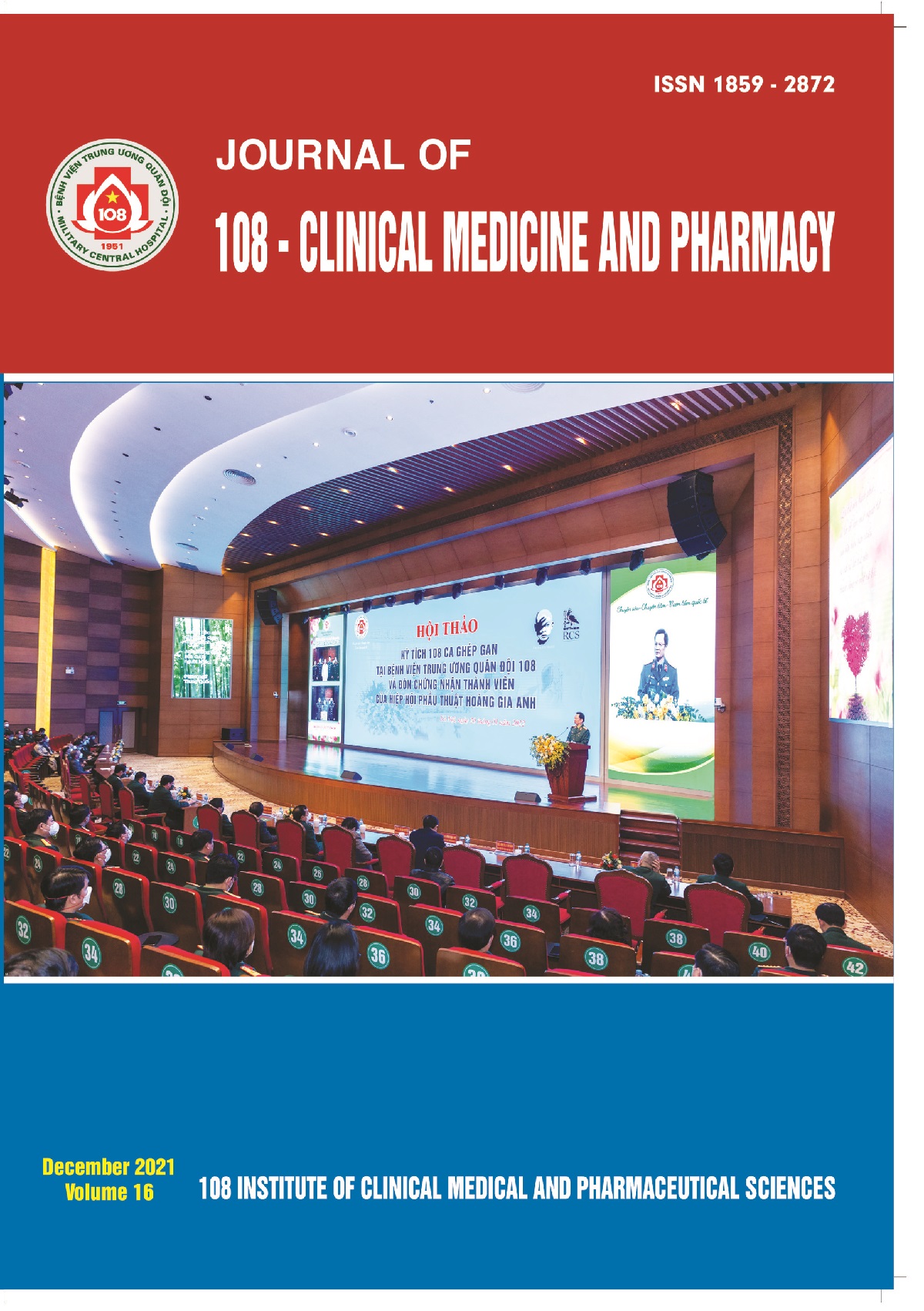Assessment of treatment in melasma by picosecond laser at 108 Military Central Hospital
Main Article Content
Keywords
Abstract
Background: Melasma is a common acquired, chronic hypermelanosis, more common in women and dark skin types, less dangerous but greatly affects aesthetics. The picosecond laser have been used with good effectiveness on melasma. Objective: To evaluate the efficacy and safety of a picosecond laser (Picoplus, Lutronic, Korea) on patients with melasma. Subject and method: We conducted a comparative longitudinal descriptive study in 58 dermal and mixed melasma patients (100% females), middle-aged, with initial severe MASI underwent treatments in 108 Military Central Hospital from 7/2017 to 12/2018 with picosecond laser. Result: Good/excellent improvement 28.9%, fair 42.2% after 8 treatment sessions. All most patient was no side effect, only 3.4% patients had temporary burning sensation. Conclusion: Treatment of melasma using a picosecond laser is an effective and safe method. However, the disadvantage of the method is the multistage procedure.
Article Details
References
2. Kang WH, Yoon KH, Lee ES et al (2002) Melasma: Histopathological characteristics in 56 Korean patients. Br J Dermatol 146(2): 228-237.
3. Trivedi MK, Yang FC, Cho BK (2017) A review of laser and light therapy in melasma. International journal of women's dermatology 3(1): 11-20.
4. Chan NP, Ho SG, Shek SY, Yeung CK, Chan HH (2010) A case series of facial depigmentation associated with low fluence Q-switched 1,064 nm Nd:YAG laser for skin rejuvenation and melasma. Lasers in surgery and medicine 42(8): 712-719.
5. Wattanakrai P, Mornchan R, Eimpunth S (2010) Low-fluence Q-switched neodymium-doped yttrium aluminum garnet (1,064nm) laser for the treatment of facial melasma in Asians. Dermatologic surgery: official publication for American Society for Dermatologic Surgery 36(1): 76-87.
6. Kwon SH, Hwang YJ, Lee SK, Park KC (2016) Heterogeneous pathology of melasma and its clinical implications. International journal of molecular sciences 17(6): 824.
7. Goh CL, Dlova CN (1999) A retrospective study on the clinical presentation and treatment outcome of melasma in a tertiary dermatological referral centre in Singapore. Singapore medical journal 40(7): 455-458.
8. Shah SD, Aurangabadkar SJ (2019) Laser toning in melasma. Journal of cutaneous and aesthetic surgery 12(2): 76-84.
9. Passeron T, Picardo M (2018) Melasma, a photoaging disorder. Pigment cell & melanoma research 31(4): 461-465.
10. Seleit I, Bakry OA, Masoud E, Nabil S (2017) Identification of genotypes and allelic frequencies of vitamin D receptor gene polymorphism (taqi) in egyptian melasma patients. Indian dermatology online journal 8(6): 443-448.
11. Chalermchai T, Rummaneethorn P (2018) Effects of a fractional picosecond 1,064 nm laser for the treatment of dermal and mixed type melasma. Journal of cosmetic and laser therapy: Official publication of the European Society for Laser Dermatology 20(3): 134-139.
12. Lacz NL, Vafaie J, Kihiczak NI, Schwartz RA (2004) Postinflammatory hyperpigmentation: A common but troubling condition. International journal of dermatology 43(5): 362-365.
13. Kang HY, Ortonne JP (2010) What should be considered in treatment of melasma. Annals of dermatology 22(4):373-378.
14. Lee YJ, Shin HJ, Noh TK, Choi KH, Chang SE (2017) Treatment of melasma and post-inflammatory hyperpigmentation by a picosecond 755-nm alexandrite laser in asian patients. Annals of dermatology 29(6): 779-781.
 ISSN: 1859 - 2872
ISSN: 1859 - 2872
